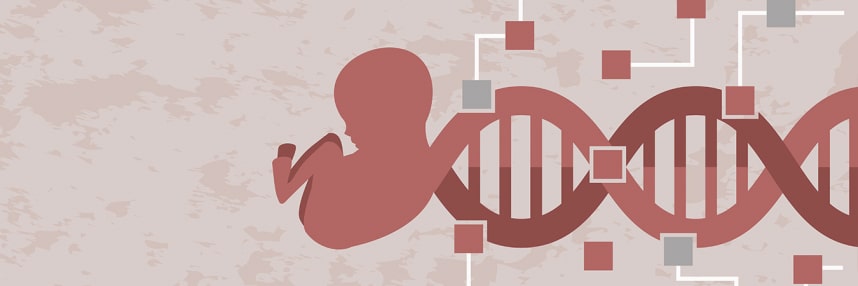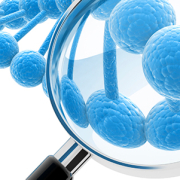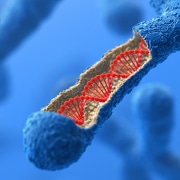What is NIPD?
Non-invasive prenatal diagnosis can provide vital information about a pregnancy, but when should the technique be used, and how does it differ from NIPT?
When there is a high probability of a baby being born with a genetic condition, historically there have been two options for prenatal diagnostic tests offered to expectant parents: chorionic villus sampling or amniocentesis. These involve taking a direct sample of the placental tissue or amniotic fluid, and so are described as invasive.
More recently, advances in genomics have led to a new diagnostic test: non-invasive prenatal diagnosis (NIPD). This technique involves taking a blood sample from the mother to look for and assess fetal DNA. But how does it work?
Finding the fetal DNA
When cells die and break down, fragments of DNA are shed into the bloodstream, and this is known as cell-free DNA (cfDNA). In a pregnant woman, most of the cfDNA will be the mother’s, but some will come from cells in the placenta that contain the DNA of the fetus – this is called cell-free fetal DNA (cffDNA).
Both NIPD and NIPT (non-invasive prenatal testing) work by analysing fragments of cfDNA found in the mother’s blood.
How is NIPD different from NIPT?
Although both NIPD and NIPT work by analysing a blood sample taken in this way, only NIPD is considered to be a diagnostic test, meaning that a follow-up invasive test is not needed to confirm a diagnosis.
NIPD can be used for certain single gene and X-linked conditions. However, in cases where the test is to assess the number of chromosomes (such as the trisomy conditions: Down syndrome, Edwards syndrome and Patau syndrome), the results are not considered definitive, and a follow-up invasive test is required to make a decisive diagnosis.
The difficulty, in both NIPD and NIPT, is knowing which DNA fragments come from the mother, and which from the fetus. Despite this, however, NIPD is still extremely useful in certain situations, where it can provide critical information at a very early stage of the pregnancy.
Applications of NIPD
NIPD can be used to identify some single gene conditions in the fetus, such as cystic fibrosis, by testing the fetal DNA in the mother’s blood.
One of the most widespread uses of NIPD is for rhesus typing. A rhesus group is an antigen present on the surface of blood cells, and whether they are present in a person’s blood is determined by two genes.
If a woman has a rhesus negative blood type and her partner is rhesus positive, she may conceive a rhesus positive child. As her body will not recognise the rhesus group, she will develop antibodies to it during her pregnancy. If she subsequently becomes pregnant with another rhesus positive child, these antibodies can attack the baby’s blood cells, causing anaemia – which can be severe. Such pregnancies require careful monitoring.
A treatment is available that helps prevent women from making the antibodies, and can largely prevent rhesus disease from occurring. The mother’s rhesus status (if unknown) can be determined by a simple blood test early in pregnancy, and NIPD can then be used to screen for the rhesus status of the fetus in the cffDNA.
Fetal sex determination
Another use of NIPD is to determine the sex of a fetus in families affected by serious X-linked conditions, such as Duchenne muscular dystrophy, as well as those with a chance of being affected by congenital adrenal hyperplasia (CAH). The cffDNA in the mother’s blood is analysed for the presence of certain genes only found on the Y chromosome. The presence or absence of these genes will indicate the sex of the fetus.
CAH is a recessive inherited condition of the adrenal gland, and one of the symptoms is increased production of male hormones, which can result in atypical genital development in females. Drug intervention is possible during fetal development to prevent this outcome, but it is not always required; only one-in-eight babies born to two carrier parents will be an affected female. Pursuing this course of treatment during all such pregnancies is therefore not ideal, and increases the probability of unnecessary side-effects.
In this case, the benefit of NIPD is its ability to determine the sex of a fetus that could be affected by CAH, so that treatment can be discontinued if the results prove it to be unnecessary.
NIPD in practice
NIPD and NIPT have been available for expectant parents for several years through commercial providers and some NHS trusts.
As part of the new England-wide NHS Genomic Medicine Service, the national genomic test directory introduces NIPD tests for a range of conditions including CAH, cystic fibrosis, Apert syndrome, Crouzon syndrome and several musculoskeletal conditions.
–









